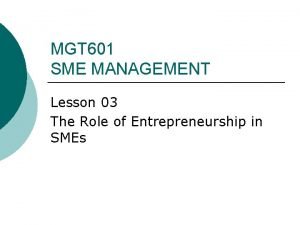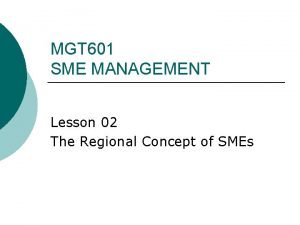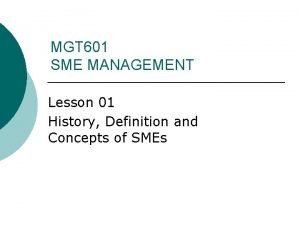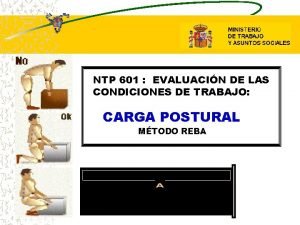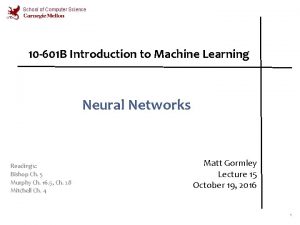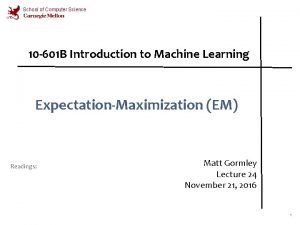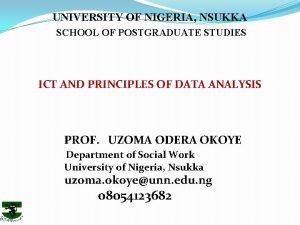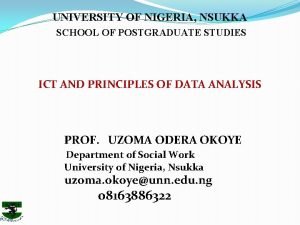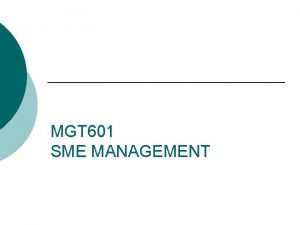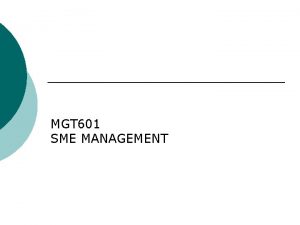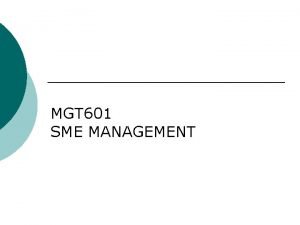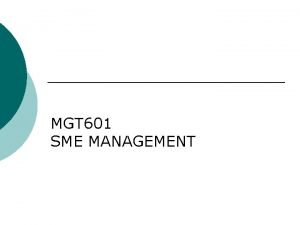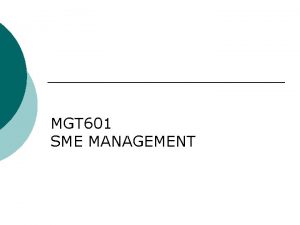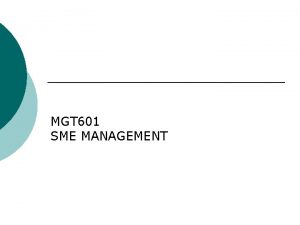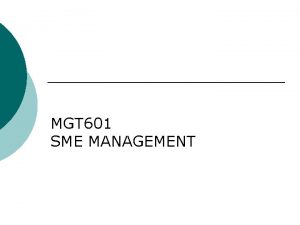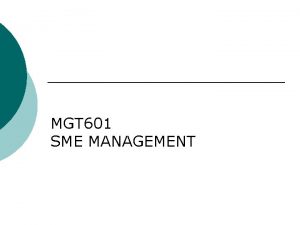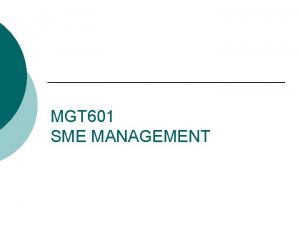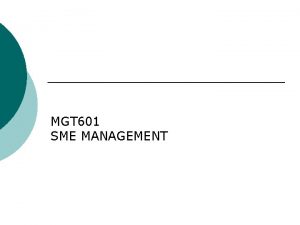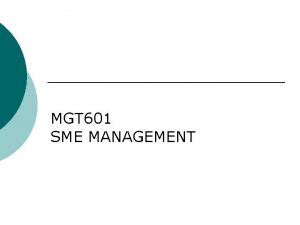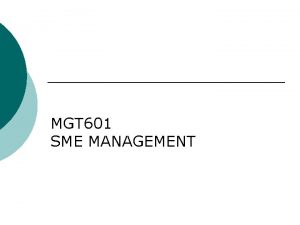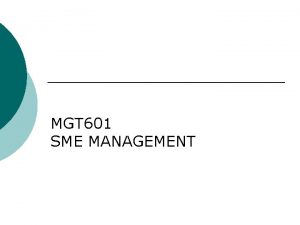MGT 601 SME MANAGEMENT Lesson 19 Post and


















- Slides: 18

MGT 601 SME MANAGEMENT

Lesson 19 Post and Field Problems Faced by a New Enterprise

Chapter Learning Objectives Chapter deals with post and field problems faced by a new venture.

Post Operative Problems faced by a New Enterprise Several problems can create hurdle to start any enterprise-whether small or large. They need not always arise but an awareness regarding them could enable their timely avoidance or prevention.

Post Operative Problems faced by a New Enterprise…. . Below are given some of the postoperative problems. 1. Lack or absence of profits

Post Operative Problems faced by a New Enterprise…. . 2. Experience factor: ¡ Unfamiliarity or lack of experience in product or services line. ¡ Lack of experience in management. There is a vast difference between being a machinist and being able to manage a machine shop.

Experience factor…… Over-concentration of experience e. g. focusing only on the area of interest say, sales, finance, production etc and neglecting others. ¡ Incompetence of management. ¡

3. Sales Causes ¡ Weak competitive position; ¡ Lack of proper inventory control ¡ Low sales volume; o Poor location

Sales Causes…. . Decline in demand due to recessionary trends in the particular industry; ¡ Inappropriate marketing strategy; ¡ High production costs and consequent high pricing; ¡

4. Expense Causes ¡ Fails to control operating expenses that reduce profits and pose a threat to survival of the firm. For instance, borrowing too heavily may force business to close if debts cannot be timely paid;

5. Neglect Causes ¡ Common cases of neglect are: poor health, laziness, and family or marriage problems. Entrepreneurs need to establish priorities for themselves relative to their involvement in the firm. They must concentrate on the objectives of the firm.

6. Capital Causes Low or over estimation of capital needs; ¡ Fund management; ¡ Cash losses; ¡ Poor debt collection or unfavorable credit terms. ¡

7. Customer Causes ¡ extension terms. of credit on liberal

8. Personal Causes High rate of absenteeism &/or labour turnover; ¡ Unhealthy industrial relations; ¡ Frequent strikes and lockouts; ¡ Low productivity; ¡ Militant trade unions. ¡

10. Government Regulations Difficulty of compliance due to excessive cost burden; ¡ Interference and dilatory tactics adopted by government authorities. 11. Natural calamities such as burglaries earthquakes, fire etc. 12. Unmindful expansion so that sufficient business is not generated to sustain expanded capacity. ¡

Environmental Causes: Changes in government policy; ¡ Changes in social or political conditions; ¡ Inflationary pressures leading to increases in the input cost. ¡

Production Causes Technological obsolescence; ¡ Low capacity utilization; ¡ Inability of labour to correctly understand technology; ¡ Non-availability of spares and replacements; ¡ Poor machinery maintenance; ¡

Thanks you Happy Learning, Keep Learning
 Mgt 601
Mgt 601 Sme management definition
Sme management definition Mgt 601
Mgt 601 Nr 601 week 7 reflection post
Nr 601 week 7 reflection post L 101: introduction to health care leadership
L 101: introduction to health care leadership An sme strategy for a sustainable and digital europe
An sme strategy for a sustainable and digital europe 601 south belvidere street
601 south belvidere street Ek601
Ek601 Ntp 601
Ntp 601 Http 601
Http 601 Backpropagation logistic regression
Backpropagation logistic regression 601(b)(10)
601(b)(10) Pgc 601
Pgc 601 Pgc 601
Pgc 601 601 pro
601 pro Pgc 601
Pgc 601 Usine peugeot
Usine peugeot Tcp 601
Tcp 601 Hino 601
Hino 601
